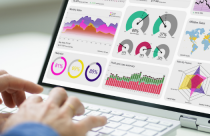ISI, Scopus or PubMed: How Do I Choose the Best Journal Based on Its Indexing?

As science becomes increasingly collaborative and inter-disciplinary, researchers have to ensure that critical research is tapped in time! Research scholars who wish to publish their articles seek journals that are indexed by prestigious and leading databases. Indexing is critical for credibility, outreach, and reputation. Consequently, it is also applicable to impacts of the journal articles.
Why is Indexing Important?
For example, if a journal requests to be indexed in Clarivate Analytics, it must conform to their rules and standards. Journal indexing assists in maintaining publication ethics and increasing the validity, visibility, and readership of the article. Articles indexed in reputed databases hosted by distinguished organizations such as PubMed, Elsevier, Clarivate Analytics, EBSCO, and Google Scholar can increase the outreach and impact of your paper. A recent report suggests that academic indexes including the Directory of Open Access Journals, MathSciNet, and Google Scholar are the top sites that research scholar visit in order to begin their research. Furthermore, researchers prefer submitting their articles to popular and trustworthy multidisciplinary databases.
Here in this article, let us have a glimpse of three popular indexing databases: Web of Science, Scopus and PubMed.
Web of Science: ISI Indexing
Institute for Scientific Information came into being in the year 1960. Following its acquisition by Thomson Reuters and merger into Clarivate Analytics, we now call it as “Web of Science”. It has a collection of high-quality journals conference proceedings and books are selected for inclusion using a unique curation process. For every article, WOS captures specifics such as author affiliations, abstract and keywords, funding particulars (agency and grant number) and all the cited references. Its exclusive organization name unification feature allows to search the complete research profile of an academic or corporate institution. Furthermore, indexing funding acknowledgment allows to identify who is funding the most influential and impactful research. It also provides citation reports that reveal information such as publications and citations per year, total times and average times cited for an article. This allows effective comparison of citation impact.
Scopus
Scopus is the largest abstract and citation database of peer-reviewed research literature, introduced by Elsevier in the year 2004. In terms of coverage, it is much younger than WOS, with consistent records since 1996. Several research scholars consider it as a high quality source for contemporary data analyses as it includes almost all the science journals covered under WOS. Furthermore, it has broader subject area and geography coverage. An additional feature that Scopus offers is the altmetrics data.
PubMed
PubMed, developed and curated by the National Center for Biotechnology Information (NCBI) is a searchable database of citations and abstracts. It is a free resource for researchers who wish to publish in medicine and allied life sciences. It provides access to citations, abstracts and full text articles from the fields of medicine, nursing, dentistry, preclinical, clinical and healthcare systems. Publishing your articles in PubMed indexed journals assists in increasing its outreach and visibility.
How Should I compare Different Indexing Database?
Academic journal articles can create an impact only if they are discoverable. Without proper indexing of these articles, even an experienced researcher would find it difficult to locate them. Several new indexation services have emerged including DOAJ, Hinari, Open L Gate, SCOLOAR, SIIC databases and Ulrich’s International Periodical Directory. Are these new indexing services credible enough? How do I compare them?
How do you determine if your target journal is hosted by a good indexing database?
An ideal indexing database should preferably cover all scientific disciplines including all forms of publications – peer reviewed articles, scientific reports, conference papers, etc.). On searching the database, it should provide the most relevant data. Other criteria that one needs to evaluate before selecting an indexing database are its coverage and language preference, criteria to collect citations, algorithms to calculate impact factors, and online presence of publications. Furthermore, researchers usually prefer indexing databases that provide advanced filter criteria such as field specifics, timeline options, and keyword search. This increases the visibility of the indexed journal and in turn the article.
How do I Search for a Journal Indexed in these Databases?
Most journals would prefer indexation in either of the credible databases. Yet, there are a few who consider indexation in multiple databases for higher visibility. Nevertheless, every database has a special “Indexing” feature that allows the user to search all the journals indexed by the database. Usually, one can access it from a “Master Journal list” or can locate it using the “Search” option.
For instance, researchers can use Clarivate Master Journal List to determine whether your journal of interest is indexed in the ISI journal list. You can search the target journal by typing the name or its ISSN. Assuming a multidisciplinary nature, WOS indexing provides a comprehensive coverage of disciplines including sciences, social sciences and arts and humanities. The different indexes provided by WOS include: Science Citation Index Expanded (SCIE), Social Sciences Citation Index (SSCI), Arts and Humanities Citation Index (AHCI), Emerging Sources Citation Index (ESCI), Current Chemical Reactions and Index Chemicus, Book Citation Index (BCI), and Conference Proceedings Citation Index (CPCI).
Likewise, researchers can figure out if their target journal is listed in the Scopus database using their search page or visiting the SCImago journal page search engine that is powered by Scopus. One can search the database using the journal title, publisher or the ISSN number of the journal. For confirming whether your journal is indexed in PubMed, researchers can explore the journals in NCBI database, using journal title or ISSN.
Have you referred to any indexing databases while locating your target journal? Which indexing database do you prefer? Please let us know in the comments section!









